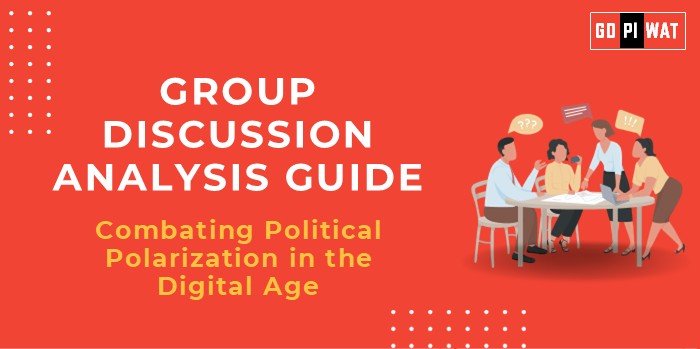📋 Group Discussion Analysis Guide
🌐 Combating Political Polarization in the Digital Age
🌟 Introduction
In the digital age, the intertwining of technology and politics has reshaped democratic discourse globally. Social media platforms have amplified ideological divides, challenging governance and societal cohesion. Addressing this issue is vital for ensuring inclusive, sustainable democracies.
📊 Quick Facts & Key Statistics
- 🌍 Social Media Users Worldwide: Over 4.9 billion people used social media in 2023.
- ⚠️ Fake News Impact: 67% of internet users encountered false information in 2022, influencing elections in at least 70 countries.
- 📈 Engagement Algorithms: Polarizing posts receive 3x more engagement than neutral content.
- 📉 Polarization Trends: Increased by 25% globally between 2010 and 2022, affecting democracies the most.
- 🌍 Global Actions: Over 50 countries launched digital literacy campaigns, and 20 nations mandated algorithmic transparency for social platforms.
👥 Stakeholders and Their Roles
- ⚖️ Governments: Enforce algorithmic transparency and promote digital literacy education.
- 💻 Tech Companies: Develop ethical algorithms and enhance content moderation.
- 🧠 Citizens: Cultivate critical thinking skills to counter misinformation.
- 🌐 NGOs: Advocate for balanced regulations and support media literacy programs.
- 📚 Academia: Provide data-driven insights for informed policy-making.
🏆 Achievements and Challenges
✅ Achievements
- Algorithmic transparency laws in 20 nations promote ethical tech practices.
- Over 50 countries implemented digital literacy initiatives.
- Increased scrutiny on tech giants sparked global accountability conversations.
⚠️ Challenges
- Uneven adoption of global best practices.
- Misinformation thrives on unregulated platforms.
- Balancing free speech with necessary regulation.
🌍 Case Study & Global Comparison
- Case Study: Germany’s NetzDG law mandates swift removal of illegal content, while Estonia uses e-governance to reduce divisive narratives.
- Global Comparison: Democracies like the U.S. face regulatory hurdles, whereas nations like Singapore implement proactive digital literacy and regulation measures.
💡 Effective Discussion Approaches
- 📊 Compelling Statistic: “Over 4.9 billion people use social media, but algorithms amplify divisive content threefold, fueling polarization.”
- ❓ Start with a Question: “How can societies safeguard democratic values in a polarized digital era?”
- 📚 Highlight a Case Study: “Germany’s NetzDG law exemplifies a balanced approach to managing content.”
🧩 Strategic Analysis of Strengths & Weaknesses
- ✔️ Strengths: Growing awareness of polarization dangers, traction for algorithmic transparency.
- ❌ Weaknesses: Disparities in regulatory implementation, gaps in digital literacy.
- ✨ Opportunities: Global collaboration on governance, advancements in AI for bias-free moderation.
- ⚠️ Threats: Risks of authoritarian overreach, increasingly sophisticated misinformation tactics.
📚 Structured Arguments for Discussion
- ✔️ Supporting Stance: “Algorithmic transparency and digital literacy campaigns can mitigate polarization effectively.”
- ❌ Opposing Stance: “Excessive regulation may curtail free speech and innovation.”
- ⚖️ Balanced Perspective: “While regulation is critical, it must be complemented by education and ethical technology practices.”
🎓 Connecting with B-School Applications
- 💼 Real-World Applications:
- Analyze policy frameworks balancing tech ethics and innovation.
- Research opportunities in digital governance and media strategies.
- 📄 Sample Interview Questions:
- “How can businesses contribute to reducing political polarization online?”
- “What role does AI play in combating misinformation?”
- 🔍 Insights for Students: Explore interdisciplinary projects on technology and public policy. Focus on ethical leadership in managing polarization challenges.


